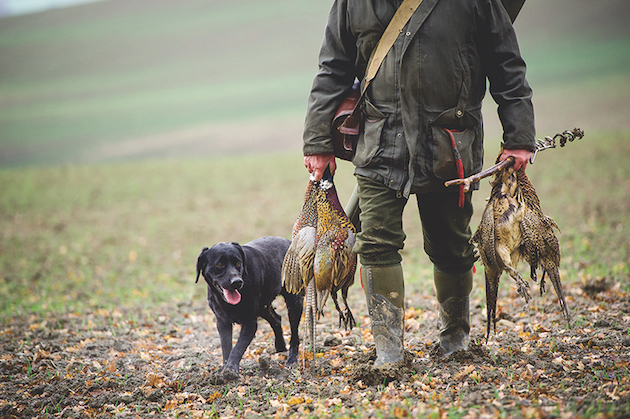What constitutes a big bag in shooting? 150, 200, 300
Alasdair Mitchell says that most Guns couldn't afford to shoot that many birds on a regular basis - nor would they want to

Do your best to ensure that all shot birds are accounted for
What constitutes a ‘big bag’ in shooting. Is it 150, 200, 300 birds?
A big bag in shooting
For all the talk, what counts as a big bag in shooting? To some extent, it’s a matter of perception — and that’s not making light of the issue. Some of the most vociferous members of the red trouser brigade need to realise that many shooters are not willing to die in a ditch for large-scale commercial shooting. Given that the best way to win an argument is to avoid having it, I’d say the commercial promoters of big baggery would be wise to keep their heads down. (Read how to deal with Guns who are after bag quantity, not quality.)
Yet we are still left with the problem of definition and here personal perspective certainly comes into play. On the same basis that I am a visitor but you are a tourist, it is hard to be truly objective. The vast majority of shooters could never afford a peg on a single big driven day, let alone shoot on that scale two or three times a week throughout the season. But many privately admit they would like to try a big day at least once.
I think we could all agree that 500 birds between eight Guns is a big bag in shooting terms. At the opposite end of the scale, a team of eight accounting for 50 driven birds seems pretty modest, being an average of a little over six birds per Gun, which means that an individual Gun might well have a blank day. For syndicate shoots, 100 to 150 birds a day is typical.

A large haul of pheasants from a shoot in 1920, typical of some of the bags shot before World War I
Some years ago, a survey by Guns On Pegs revealed that 68% of respondents felt that anything beyond 200 was a big bag. Of course, even 50 is too many for the antis.
My guess — and it is merely that — is that for a daily bag to start being considered controversial by ordinary shooters, it would probably be north of 300. For a team of eight, a bag of 350 is an average of nearly 44 birds per Gun.
To shoot that many, you might have to fire something like 150 cartridges. For medium-height pheasants, such a day could cost you about £2,000. It could be £2,600 or even more for high birds.
A big shoot is likely to be well organised, with pickers-up and a properly managed game cart to ensure that the shot birds suffer minimal spoilage. It injects money into the local economy and pays for the management of the countryside.
Who, other than hardcore antis, could object to that?
Well, envy comes into play, of course. But there are also concerns about greed, environmental impact and the public image of shooting. We already produce more game meat than the market wants and big bags exacerbate the problem. Showing that we do not waste shot game is important to the defence of shooting more generally. Nor should we be releasing such a density of birds that they degrade habitat, or firing so many gunshots, so often, that local residents are alienated.
Walked-up shooting involves hunting skills and fieldcraft. By contrast, driven shooting is more about organisation and ability. For those whose main enjoyment comes from firing shot after shot at quantities of high, varied and fast-moving targets, simulated game might seem an ethical alternative. But so much depends on precise circumstances that it is unwise to be prescriptive.








